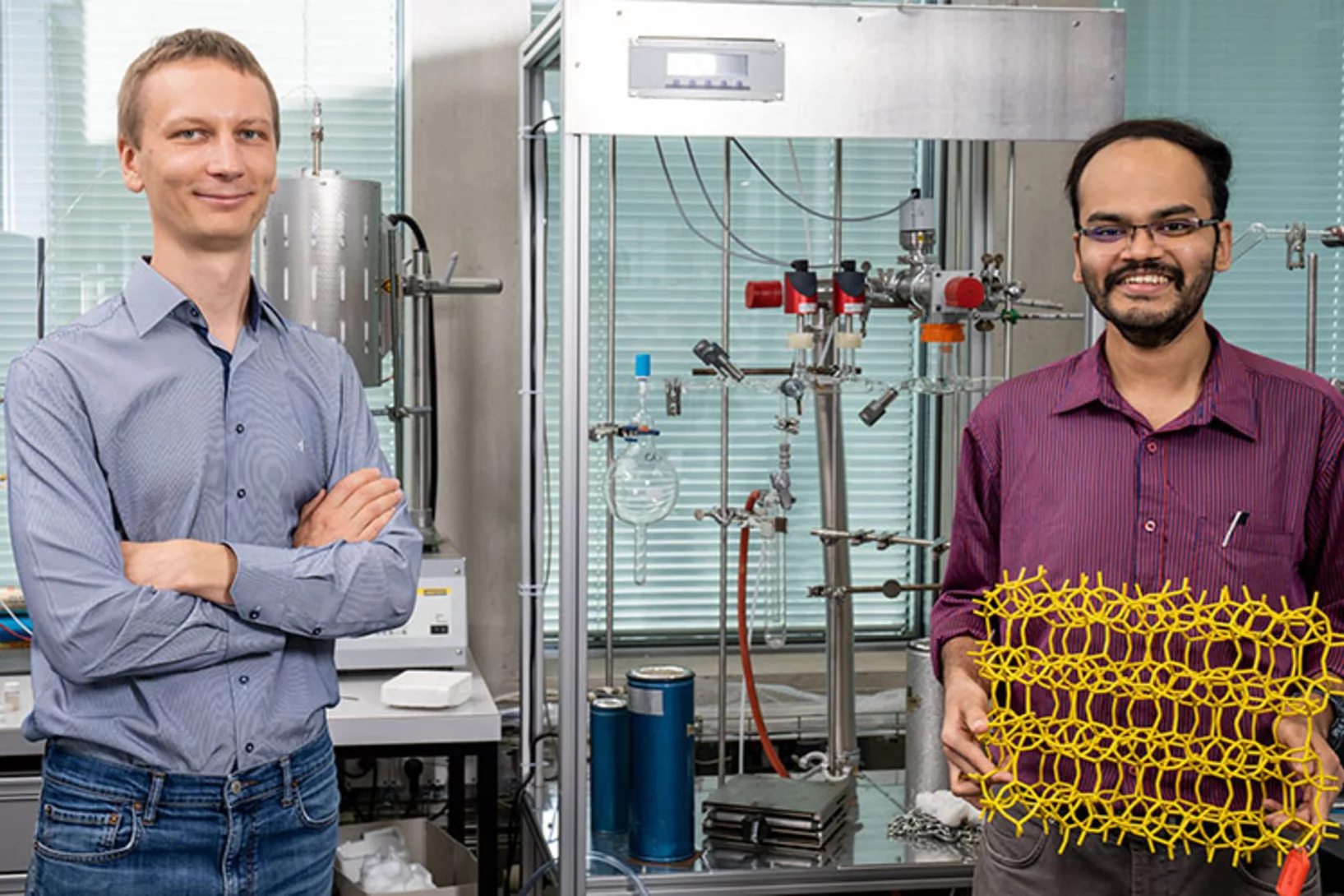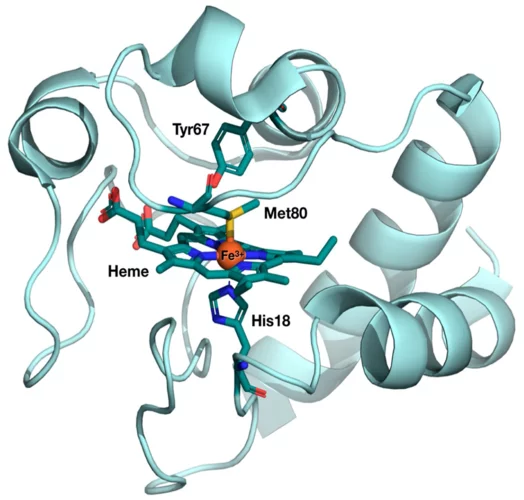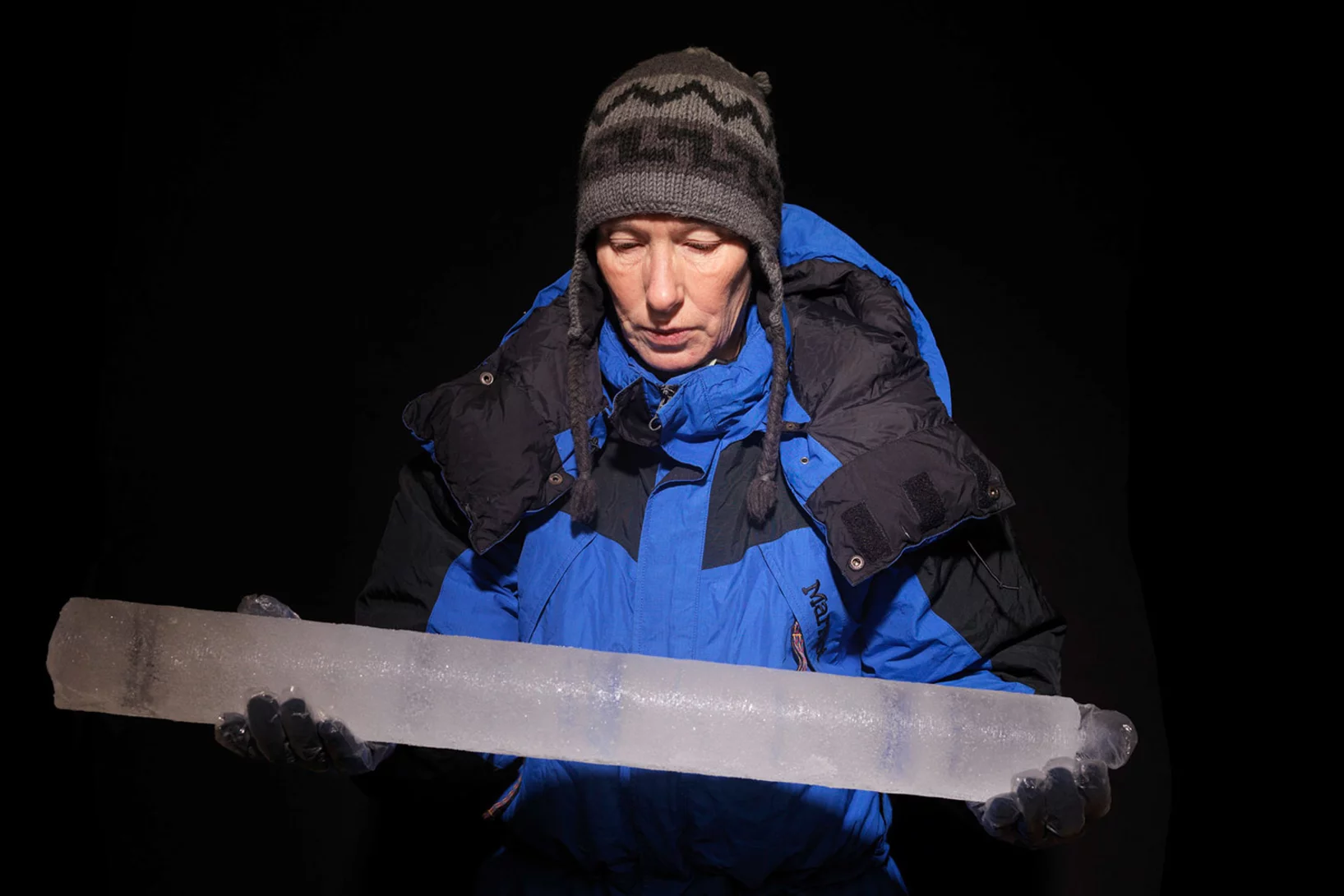Am PSI widmen sich mehrere Projekte wichtigen Forschungsfragen rund um das Coronavirus Sars-CoV-2 und den daraus resultierenden Erkrankungen. Wir informieren über Aktivitäten und Vorhaben, zum Beispiel zu Untersuchungen von Lungengewebe, zur Produktion von Proteinen und Antikörpern oder über Ideen für neue Forschung zu Covid-19.
Nützliche Links
PSI - member of the Microsoft Quantum Network
The PSD is a research partner in the Microsoft Quantum Network, which is a broad community of individuals and organizations collaborating with Microsoft to advance a comprehensive quantum ecosystem, develop practical solutions, and build a robust quantum workforce.
The institutions of scientific excellence are partnering collaboratively with Microsoft to pursue the advancement of quantum computing research, development, and education. The large scale facilities at PSI, in particular the Swiss Light Source, offers unique characterizations techniques to shed light on the secrets of functional materials.
Spin cascade and doming in ferric hemes
In biology, structure and function are closely interwoven. A case in point is oxygen transport in the lungs, which relies on ferrous heme proteins adopting dome-like shapes.
Neues Verfahren für ultraschnelle Tumor-Therapie
Erstmals haben Forschende am Zentrum für Protonentherapie des PSI eine ultraschnelle, hoch dosierte Bestrahlung mit Protonen getestet. Das neue, experimentelle FLASH-Verfahren könnte die Strahlentherapie von Krebs revolutionieren.
Remote Operation of the PEEM Endstation
We have recently upgraded the PEEM endstation at the SIM beamline to enable remotely controlled experiments via internet and mailed-in samples. Sample positioning and tilt control is now possible by means of a motorized sample stage. A newly developed computer controlled switchbox is available for remote temperature control and in situ application of electric or magnetic fields to the sample.
Novel optics enable better X-ray Free Electron Laser experiments
Our research on multifocus off-axis zone plates was accepted in “Optica”, the highest impact journal of the Optical Society of America. In the paper we report on different ways to combine focusing and beam-splitting functionalities in one single optical element.
First light in the SwissFEL Maloja endstation
The first endstation at the SwissFEL Athos soft X-ray branch is rapidly developing and on track for first experiments in 2021.
BATTERY 2030+: Europa soll weltweit führend werden
Zukünftige Batterien müssen mehr Energie speichern, länger leben und sicherer und umweltfreundlicher sein als Batterien heutiger Bauart. Die europäische Initiative BATTERY 2030+, an der sich auch das PSI beteiligt, soll bei der Erreichung dieser Ziele helfen.
Technical Design of the Phase I Mu3e Experiment published on the arXiv
In almost a decade of R&D, we have developed a detailed technical design for the Mu3e experiment, based on many new and exciting detector technologies.
Direct Observation of the Statics and Dynamics of Emergent Magnetic Monopoles in a Chiral Magnet
In the three-dimensional (3D) Heisenberg model, topological point defects known as spin hedgehogs behave as emergent magnetic monopoles, i.e., quantized sources and sinks of gauge fields that couple strongly to conduction electrons, and cause unconventional transport responses such as the gigantic Hall effect. We observe a dramatic change in the Hall effect upon the transformation of a spin hedgehog crystal in a chiral magnet MnGe through combined measurements of magnetotransport and small-angle neutron scattering (SANS).
Nanowirbel mit besonderer Eigenschaft
Forschende am Paul Scherrer Institut PSI haben besondere Nano-Wirbel in einem Material zum ersten Mal nachgewiesen: sogenannte antiferromagnetische Skyrmionen.
ANAXAM auf Erfolgskurs!
Seit der Gründung des neuen Technologietransferzentrums «ANAXAM» sind nun bereits einige Monate vergangen. Unter der Geschäftsführung von Dr. Christian Grünzweig und in enger Zusammenarbeit mit dem PSI steht ANAXAM im Einsatz für die Industrie und fährt auf Erfolgskurs – Zeit für einen kurzen Rückblick.
Fractional antiferromagnetic skyrmion lattice induced by anisotropic couplings
Magnetic skyrmions are topological solitons with a nanoscale winding spin texture that hold promise for spintronics applications. Skyrmions have so far been observed in a variety of magnets that exhibit nearly parallel alignment for neighbouring spins, but theoretically skyrmions with anti-parallel neighbouring spins are also possible. Such antiferromagnetic skyrmions may allow more flexible control than conventional ferromagnetic skyrmions. Here, by combining neutron scattering measurements and Monte Carlo simulations, we show that a fractional antiferromagnetic skyrmion lattice is stabilized in MnSc2S4 through anisotropic couplings.
Understanding of the Oxygen Evolution Reaction Kinetics in Acidic Environment
The high operational expenditure of polymer electrolyte water electrolysis (PEWE) technology, dominated by kinetic losses from the sluggish oxygen evolution reaction (OER), inhibits large-scale market penetration. PSI researchers have developed a novel methodology to access underlying reaction mechanism of the OER. For the first time the reaction order for water has been determined. Advanced benchmarking of catalysts in technical environment also supports the development of novel, highly efficient catalyst materials.
Ein elektronisches Material massschneidern
Forschende am PSI haben ein Material untersucht, das sich für zukünftige Anwendungen in der Datenspeicherung eignen könnte. Mit einem Trick haben sie die Kristallstruktur ihrer Probe gezielt verzerrt und dabei vermessen, wie dies die magnetischen und elektronischen Eigenschaften beeinflusst.
Bessere Katalysatoren für eine nachhaltige Bioökonomie
Zeolithe sind bereits heute unerlässliche Hilfsmittel in der chemischen Industrie – Forschende vom Paul Scherrer Institut PSI und von der ETH Zürich schlagen jetzt Wege vor, diese noch leistungsstärker zu machen.
Strain engineering of the charge and spin-orbital interactions in Sr2IrO4
Understanding the relationship between entangled degrees of freedom (DOF) is a central problem in correlated materials and the possibility to influence their balance is promising toward realizing novel functionalities. In Sr2IrO4, the interaction between spin–orbit coupling and electron correlations induces an exotic ground state with magnetotransport properties promising for antiferromagnetic spintronics applications.
Deep geological disposal of radioactive waste in clay rocks
Geological waste disposal, cement clay interaction
• A considerable reduction of HTO and 36Cl− was observed after 6 years interaction.
• The chloride flux showed a much stronger reduction compared to HTO.
• For HTO the relation between the De and the porosity in the clay part can be described using Archie's law.
• No complete clogging of the porosity was observed after 6 years interaction.
Advances in de novo protein structure determination using long-wavelength native-SAD phasing at SwissFEL
An international team of scientists from the Paul Scherrer Institute and members of the LeadXpro and Heptares pharmaceutical companies led by Karol Nass (Alvra group, SwissFEL) demonstrated a significant advancement in de novo protein structure determination at X-ray free-electron lasers. Their article, published recently in IUCrJ (DOI: 10.1107/S2052252520011379), describes structure determination of a membrane protein and an important drug target (A2A adenosine receptor) by native single-wavelength anomalous diffraction (native-SAD) at SwissFEL with up to ten fold reduction in the required number of indexed images.
Analytical Research Infrastructures of Europe (ARIE) join forces to face COVID-19 and other viral and microbial threats
After the joint position paper published as a pre-release in July, in which the Analytical Research Infrastructures of Europe (ARIE) presented their plan to tackle HE Missions, the ARIE enhanced its cross-border, multidisciplinary collaboration to offer Europe a strong and valid weapon against the present COVID-19 challenge and other potential viral and microbial threats.
A novel terahertz source for selective phonon excitation
Excitation of coherent phonons using light is an emerging approach for investigating condensed matter physics. It has the potential not only to reveal the dynamics of collective lattice vibrations but also to tailor them for the ultrafast control over the electronic, magnetic, and structural properties in solids. The optical phonons, in most solids, lie primarily in the spectral region between 1 and 10 THz. Unlike conventional laser sources, coherent radiation at these frequencies allows us to study time-resolved lattice displacements with only minor deposition of heat or generation of hot electrons. However, the available high-field terahertz sources, with their quasi-single cycle temporal shape and broadband spectrum, cannot be used to excite the individual phonon modes. By contrast, the challenge of understanding the transient dynamics of low-energy excitations calls for novel sources of narrow-band terahertz radiation at high intensities that can be tuned to the individual phonon resonances. Moreover, with strong enough fields tuned precisely to a phonon resonance, non-linearities in the material can be targeted and potentially exploited.
Corona-Multitool - Ein Werkzeug um zu überleben?
Viele haben Angst, sich während der Corona Pandemie anzustecken. Jede Berührung mit einer öffentlichen Türklinke, einem Druckknopf oder einem Touchscreen etc. könnte fatale Folgen haben. Jedoch gibt es für jedes Problem eine Lösung.
Installation of SPTS Rapier Deep Reactive Ion Etcher
SPTS Rapier system for Si deep reactive ion etching (DRIE) is released for user operation. The system is acquired by PSI as a part of SNF R’Equip project “Advanced Si DRIE tool for highly uniform ultra-deep structuring (SiDRY)”. This versatile tool is equipped with pulsed bias option and sensitive ClaritasTM optical end point detection system. Electrostatic clamping and wafer edge protection systems are both available for three wafer diameters – 100 mm, 150 mm, and 200 mm.
Magnon Modes of Microstates and Microwave-Induced Avalanche in Kagome Artificial Spin Ice with Topological Defects
In this work the spin dynamics of microstates in artificial spin ice (ASI) in Ni81Fe19 nanomagnets arranged in an interconnected kagome lattice has been investigated using microfocus Brillouin light scattering, broadband ferromagnetic resonance, magnetic force microscopy, x-ray photoemission electron microscopy, and micromagnetic simulations. The findings are key for the creation of avalanches inside the kagome ASI and reprogrammable magnonics based on ASIs.
Unraveling the structural dynamics of Heme proteins at SwissFEL
The results from the very first user experiment at SwissFEL have just been published in the Proceedings of the National Academy of Sciences (PNAS). The measurements probed the electron transport properties of the cytochrome c protein, which is found in cellular mitochondria. The measurements show that when the Fe atom at the centre of the protein undergoes electronic excitation, for example when it gains or loses and electron, the active centre of the protein undergoes a doming structural rearrangement. This result raises interesting questions about how this structural change is involved in the electron transfer properties of cytochrome c.
Installation of SPTS Rapier Deep Reactive Ion Etcher
SPTS Rapier system for Si deep reactive ion etching (DRIE) is released for user operation. The system is acquired by PSI as a part of SNF R’Equip project “Advanced Si DRIE tool for highly uniform ultra-deep structuring (SiDRY)”. This versatile tool is equipped with pulsed bias option and sensitive ClaritasTM optical end point detection system. Electrostatic clamping and wafer edge protection systems are both available for three wafer diameters – 100 mm, 150 mm, and 200 mm.
Das kalte Gedächtnis der Erde
Forschende des Paul Scherrer Instituts PSI helfen im Rahmen eines internationalen Projektes, ein wertvolles Umwelt- und Klima-Archiv zu retten. Während einer Expedition auf mehr als 4000 Höhenmetern am Grand Combin in den Alpen, bohren sie Eiskerne aus schmelzenden Gletschern, um sie in der Antarktis zu konservieren.
Tuning the magnesium content in magnesium rich-calcites
Magnesium rich calcites are important functional biominerals. For example, they can be found in protective shells or eye lenses. Natural organism provide a surprisingly high degree of control on the amount of magnesium incorporation into calcites by yet not well understood mechanisms. Understanding such control mechanism is important when designing bio inspired functional materials. Here we systematically explore the impact of thermodynamic parameters on the degree of magnesium incorporation into calcite. In particular, we identify the thermodynamic conditions, where very high magnesium rich calcites (50% Mg/50% Ca) forms under ambient conditions of temperature and pressure. This is an important finding for geochemistry: Very high magnesium rich calcite is believed to be the precursor for dolomite. Despite its frequent occurrence in nature, its unknown formation pathway remains one of the big mysteries in geochemistry.
Aerosol-based synthesis of pure and stable amorphous calcium carbonate
Calcium carbonates are key materials to biomineralization, they are frequently used in industrial applications and also for carbon capture technologies. Finally, they serve as an important model system to test novel nucleation theories. Calcium carbonate crystalizes in a multi-step process, where amorphous calcium carbonate (ACC) is the most important precursor in the crystallization process. Existing synthesis protocols generate ACC of different stability and purity. To improve our mechanistic understanding of carbonate crystallization, reactivity and polymorph formation, the reproducible synthesis of clean and stable ACC is an important, and yet unresolved step. Here we use the fast reaction of CO2 with calcium hydroxide in airborne aerosols to reproducibly create pure and stable ACC, which may serve as a well-defined starting material for further chemical processing.
Tuning the magnesium content in magnesium rich-calcites
Magnesium rich calcites are important functional biominerals. For example, they can be found in protective shells or eye lenses. Natural organism provide a surprisingly high degree of control on the amount of magnesium incorporation into calcites by yet not well understood mechanisms. Understanding such control mechanism is important when designing bio inspired functional materials. Here we systematically explore the impact of thermodynamic parameters on the degree of magnesium incorporation into calcite. In particular, we identify the thermodynamic conditions, where very high magnesium rich calcites (50% Mg/50% Ca) forms under ambient conditions of temperature and pressure. This is an important finding for geochemistry: Very high magnesium rich calcite is believed to be the precursor for dolomite. Despite its frequent occurrence in nature, its unknown formation pathway remains one of the big mysteries in geochemistry.
Aerosol-based synthesis of pure and stable amorphous calcium carbonate
Calcium carbonates are key materials to biomineralization, they are frequently used in industrial applications and also for carbon capture technologies. Finally, they serve as an important model system to test novel nucleation theories. Calcium carbonate crystalizes in a multi-step process, where amorphous calcium carbonate (ACC) is the most important precursor in the crystallization process. Existing synthesis protocols generate ACC of different stability and purity. To improve our mechanistic understanding of carbonate crystallization, reactivity and polymorph formation, the reproducible synthesis of clean and stable ACC is an important, and yet unresolved step. Here we use the fast reaction of CO2 with calcium hydroxide in airborne aerosols to reproducibly create pure and stable ACC, which may serve as a well-defined starting material for further chemical processing.


























